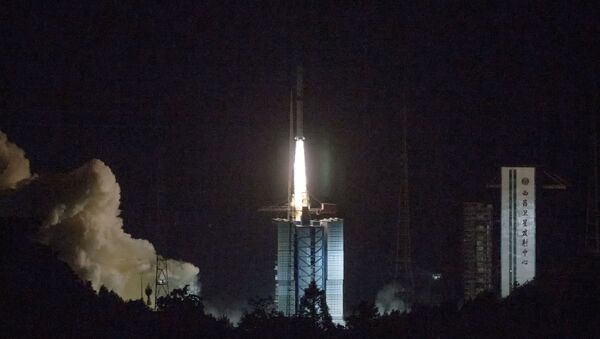A spokesperson for the National Security Council of the Trump administration, Garrett Marquis, said that the "Patagonian ground station, agreed a decade ago with a corrupt and financially vulnerable government, is another example of a non-transparent and predatory Chinese deal that undermines the sovereignty of the host country".
Why did the long-agreed stations become the object of an information attack, and are the Chinese tracking stations really such a danger to the West? Sputnik asked Russian military expert Vasily Kashin to answer these questions.
Maintaining a network of worldwide distributed space tracking stations and satellite communications is a necessary part of any advanced space program. China began to build such facilities against the backdrop of the growth of its space program in the 2000s.
China has an overseas network of stations monitoring space objects. One such station is located in Dongara, Australia — a US military ally. The facility was approved by the Australian government in 2009 and in 2011 was used to support the flight of the Shenzhou 8 spacecraft.
READ MORE: US Aims for Space Supremacy Pose Potential Threats to Russia, China — Ambassador
Unlike the facility in Patagonia, the station in Dongara was built by a Swedish company and transferred to the Chinese as tenants for operation. It was inspected by the Australian authorities (a claim is made regarding the station in Patagonia that there is no necessary inspection mechanism). At the same time, the key equipment of the station in Dongara was supplied from China and operated by Chinese personnel.
Another Chinese facility in a Western state is a station in Kiruna, Sweden. Other stations are located in the Pacific island state of Kiribati, in Pakistan (in Karachi and Lahore), Kenya (Malindi), Namibia (Swakopmund) and in Chile (Santiago).
Yuanwang Space Tracking Ships
Of course, the commissioning of ground stations made it possible to simplify, cheapen and improve the accuracy of observation and control of spacecraft in orbit. The need for such infrastructure is growing in line with Chinese space ambitions, including the implementation of missions to the moon and deep-space research.
Against the backdrop of the US-instigated expansion of the arms race into space, the line between military and civilian programs seems to be completely erased. Any space program belonging to an enemy country is beginning to be perceived as a threat. As a result, Chinese space infrastructure on the territory of US allies may be in a difficult position. China will have to think about their transfer to more reliable places or about building additional expensive vessels to track space objects.
The views and opinions expressed by the speaker do not necessarily reflect those of Sputnik.






